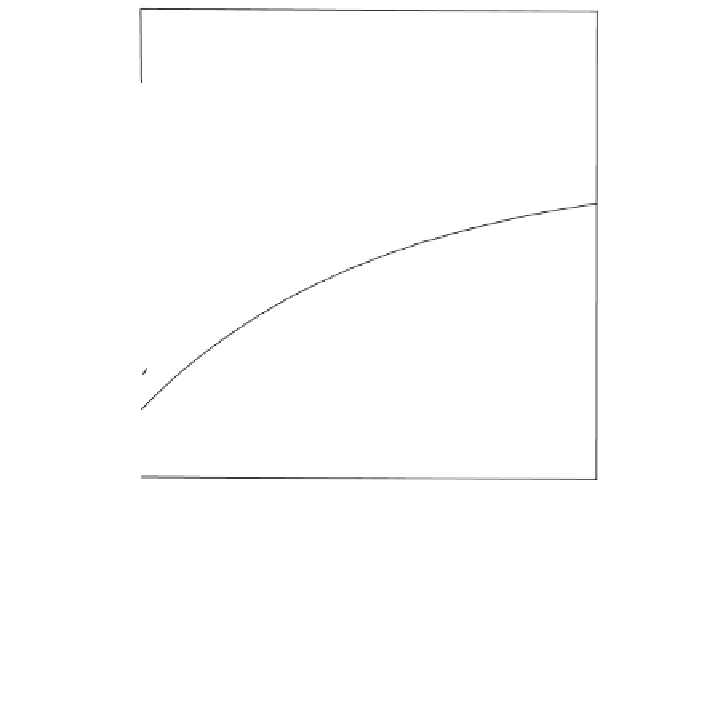Geology Reference
In-Depth Information
1400
1300
P
l
1200
Cpx
9
1100
Mel out
1000
2
4
900
3
6
800
7
5
700
8
600
Ab
Ak
10
20
30
40
50
60
70
80
90
An
Ak
50
50
50
50
wt.%
1
.Cpx+Pl+Ne +Wol
ss
2
.Cpx+Wol +L+G
ss
3
.Cpx+Wol +Pl+L+G
ss
ss
4
.Cpx+Mel+Pl+ Wol
+G
5
.Cpx+Pl+Ne+Wol +G
ss
6
. Cpx + Mel + Pl + Gr + Wol
+ G
ss
ss
7
.Cpx+Gr+Pl+Wol +G
ss
8
.Cpx+Pl+Wol +Ne +Gr+G
ss ss
9
.Mel+Pl+Cpx+ Wol
ss
Fig. 8.7 Phase relation in the join Ab
50
Ak
50
-
An
50
Ak
50
at 1 atmosphere showing that melilite can
coexist with anorthite-rich plagioclase under atmospheric pressures (after Yoder 1969b). At lower
temperatures are presented the hydrothermal relations in an excess of water at P(H
2
O) = 0.2 GPa
for the same composition. The curves mark the boundaries between assemblages
various silication reactions, which indicated that silication of forsterite + akermanite
to produce diopside takes place much before the silication of nepheline to form
albite.
The phase diagram of the join albite
50
akermanite
50
-
anorthite
50
akermanite
50
,
studied at 1 atm. by Yoder (1969; Fig.
8.7
) shows the melilite
plagioclase coex-
istence over a broad temperature-composition range. He also studied a natural
melilite (akermanite:sodamelilite is 2:1) and natural plagioclase (close to anor-
thite
50
) mixed in equal proportions, and noted that above 850
-
C, melilite and
plagioclase coexisted with diopside
ss
, wollastonite
ss
, and liquid however, under
0.2 GPa P(H
2
O), the assemblage consisted of diop-side
ss
+ plagioclase + nephe-
line
ss
+ wollastonite
ss
at 700, 800 and 900
°
C.
A mixture of composition (Di
27
Ne
29
Lc
44
)
75
An
25
was studied under water
pressures [P(H
2
O) = P(Total)] by Gupta and Yagi (1980) to see if the presence, of
water in the system has any effect on the melilite
°
plagioclase coexistence. The
-
study showed that below 0.25 GPa, at 700 and 800
°
C the assemblage consisted of

































































































































































Search WWH ::

Custom Search